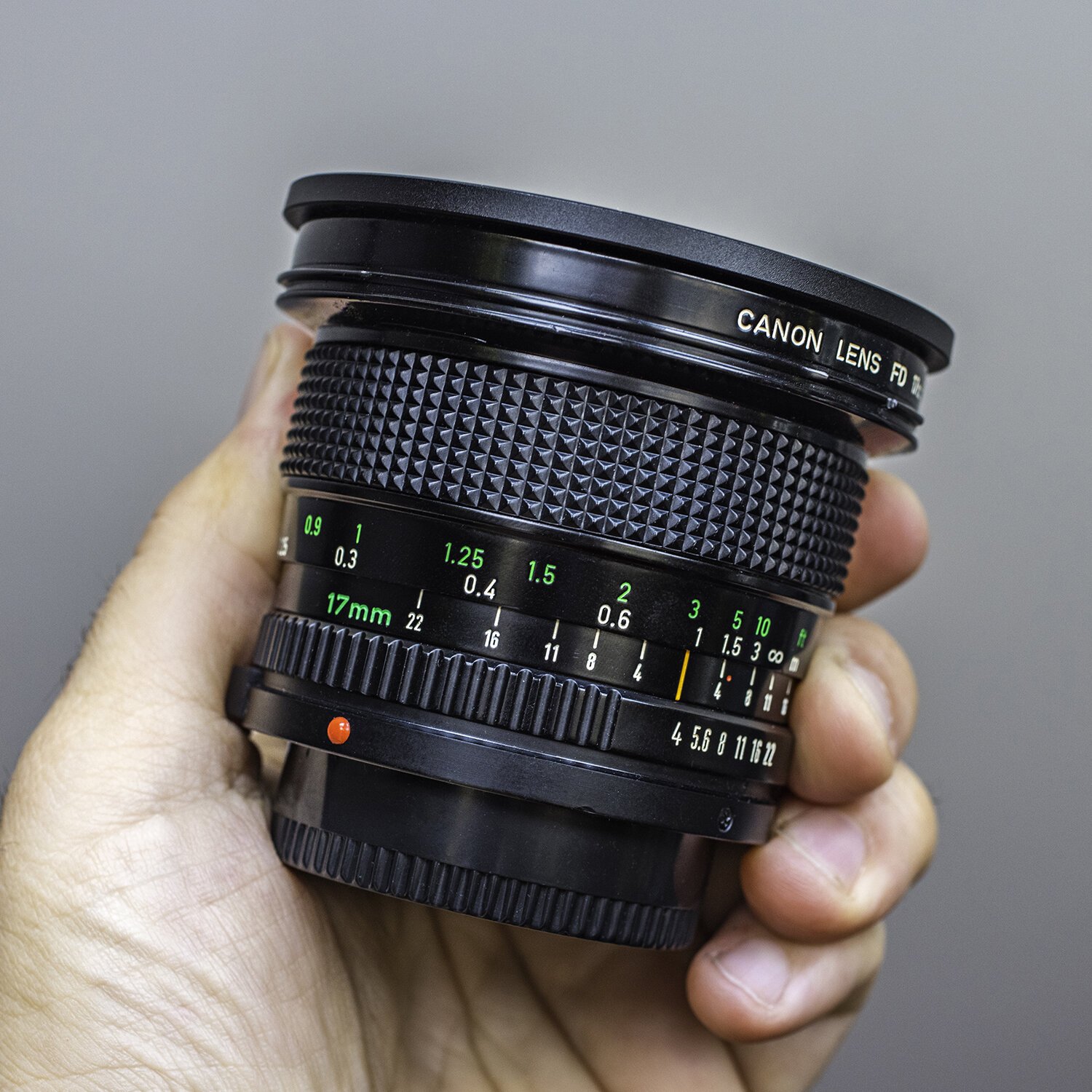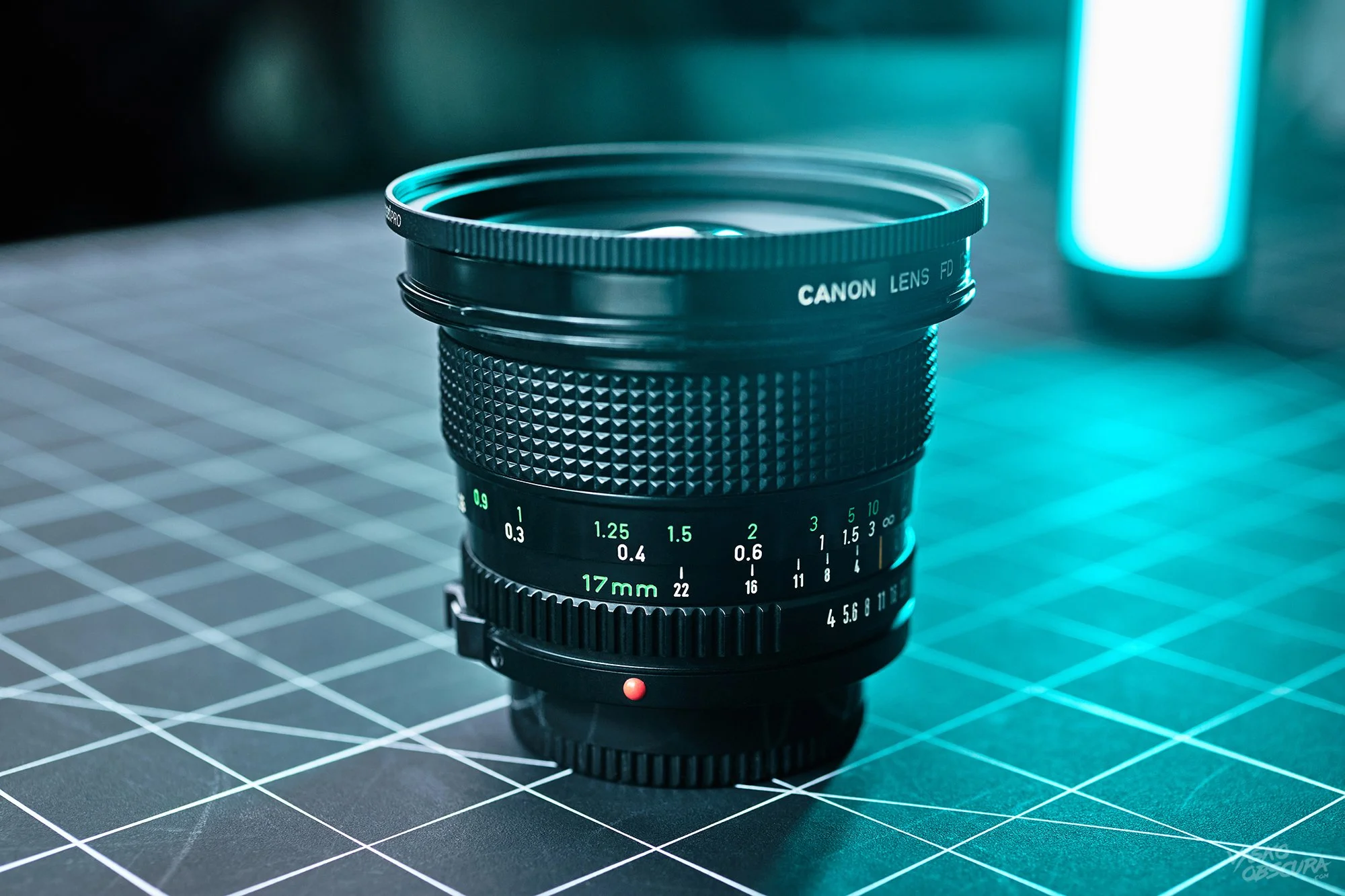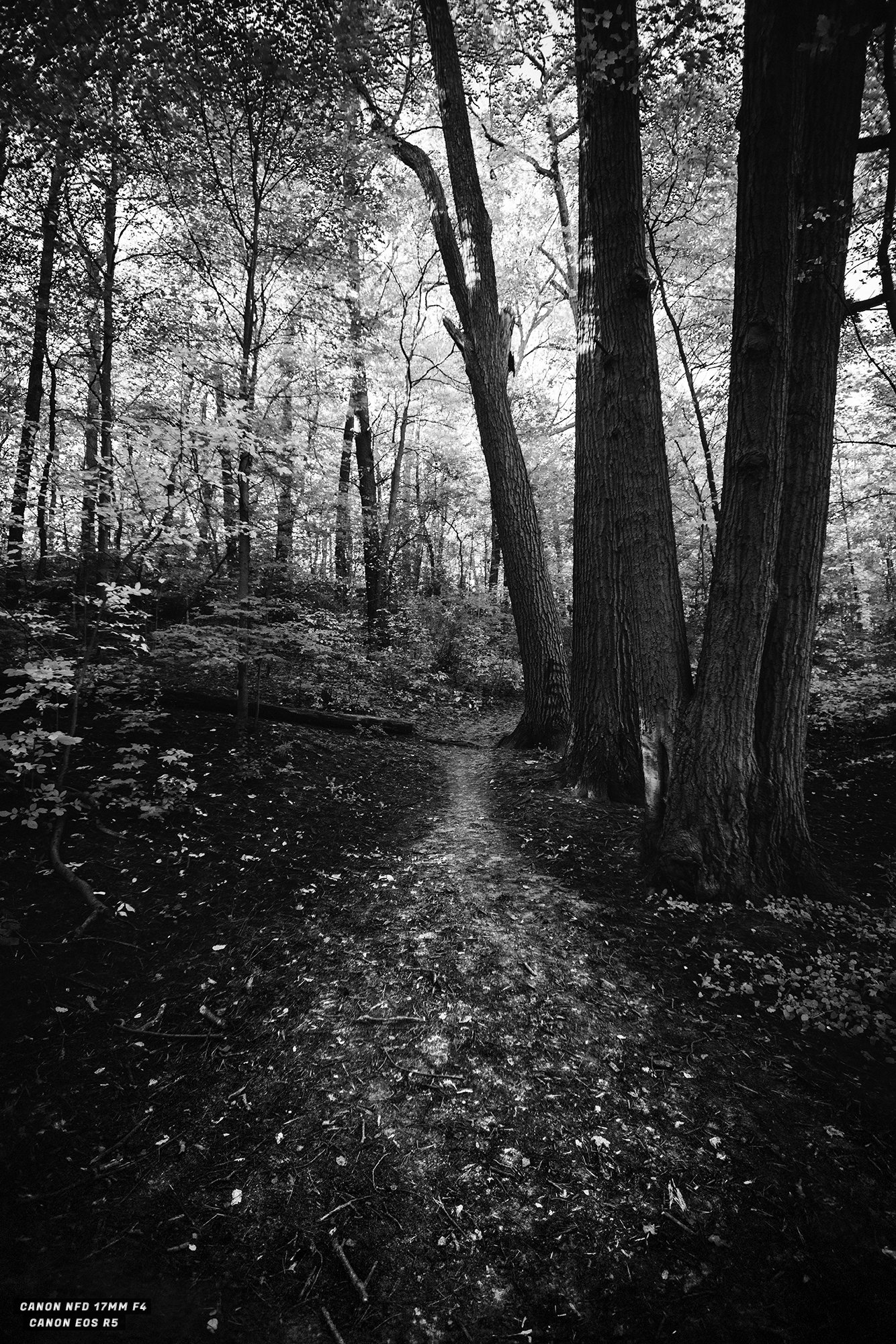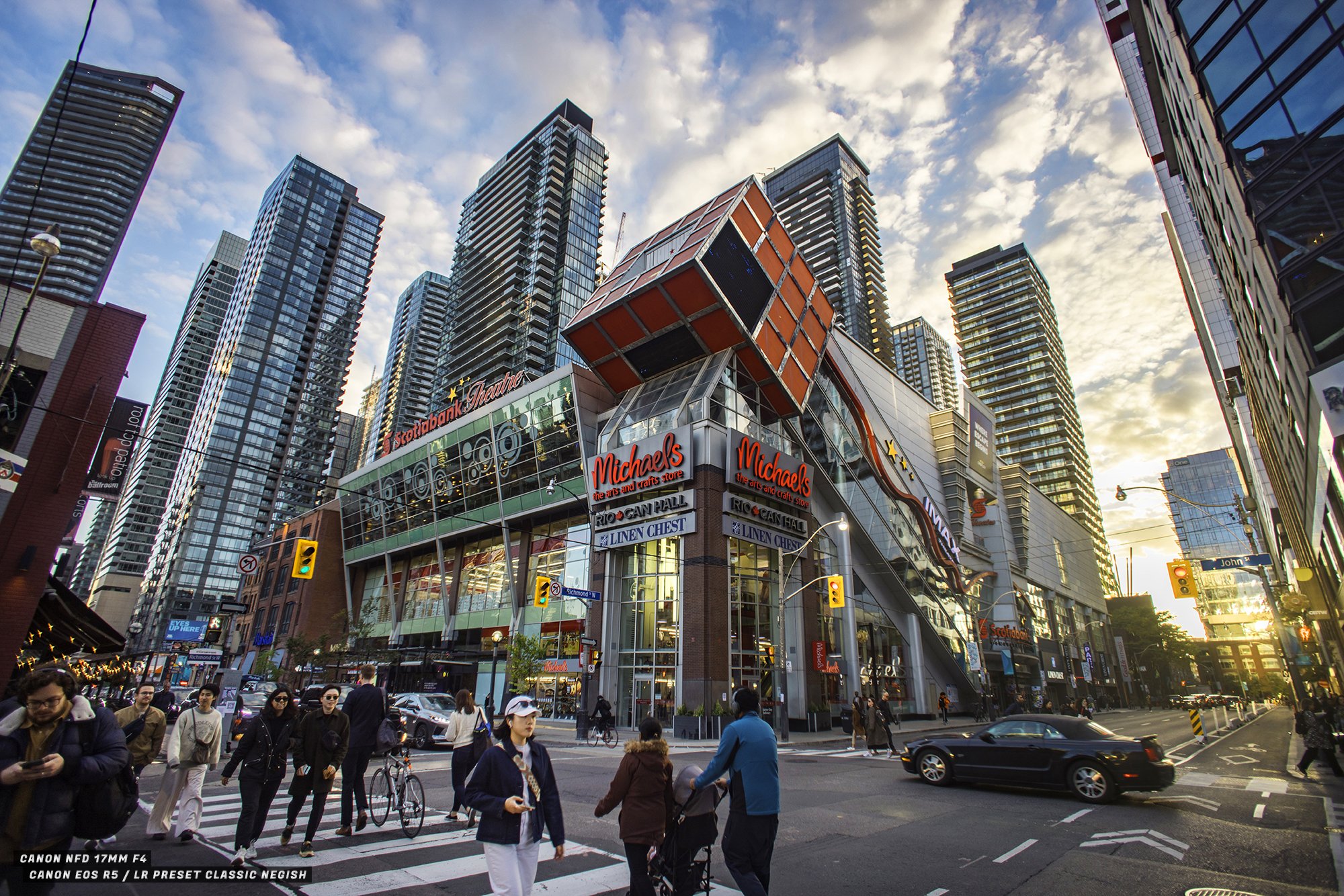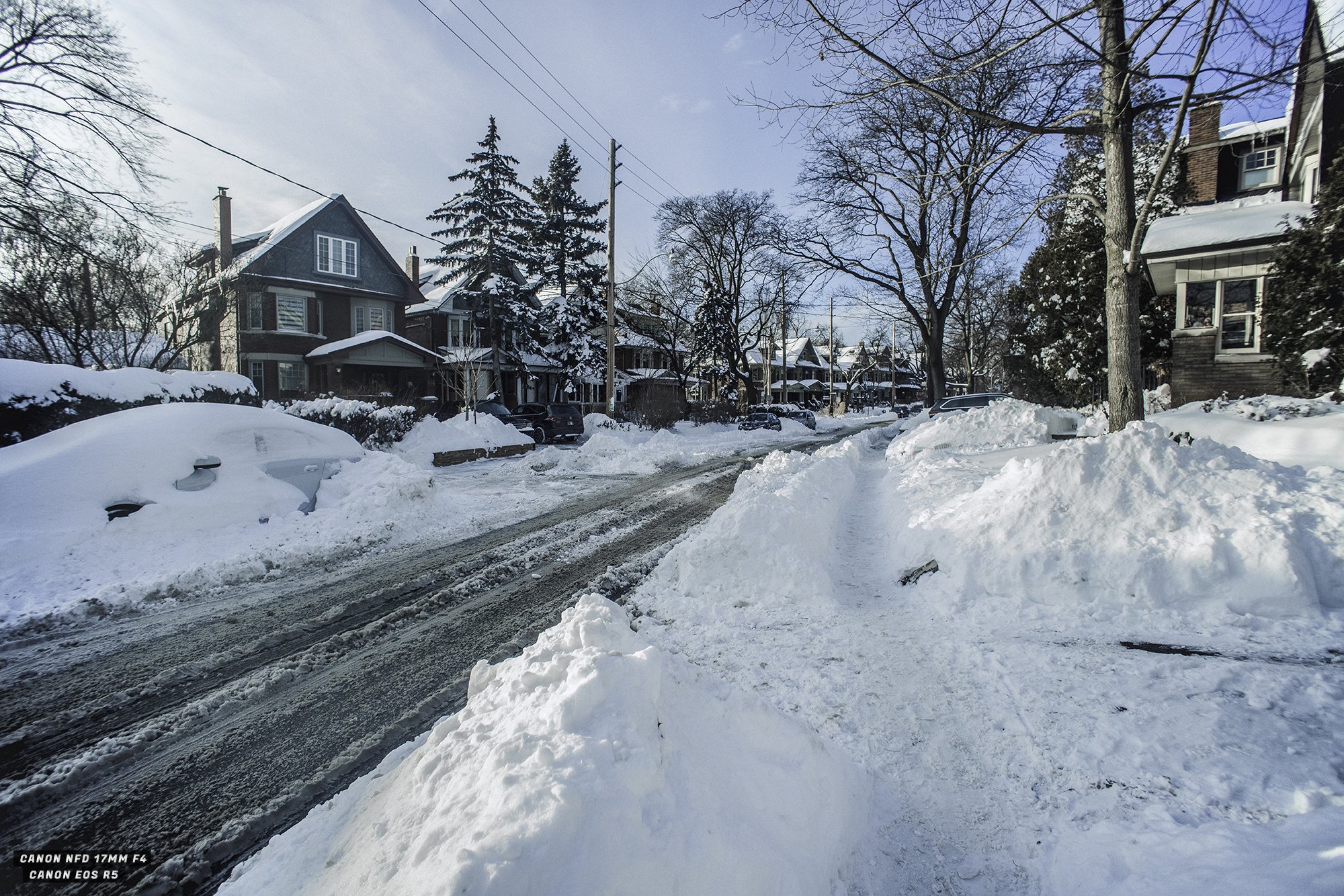Canon nFD 17mm f4 Review
Canon NFD 17mm F4
The ultra wide angle Canon nFD 17mm f4 was released in 1979 and features an exciting 104 degree field of view. It does have a decent amount of vignette wide open and corner sharpness isn’t the greatest but that’s not why we love vintage lenses. Vintage lenses are all about the character. The more imperfections the better. The Super Spectra Coating does help with flare and contrast which is a bonus on an ultra wide angle. Images don’t fall off even when you have the sun in your shot. There is a softness or glow that happens around any bright light which is one of the beautiful characteristics of this lens. Overall I’m very happy with this lens. Here is the sample gallery.
Lens Specs
Released Date: 1979
Format: 35mm
Mount: Canon FD
Filter: 72mm
Aperture Blades: 6
Aperture Range: 4 - 22
Min Focus Distance: 0.25m
Weight 360g
Optical Design: 9 elements in 8 groups
Weather Sealing: No
Lens IS.: No
APS-C Conversion Approx.: 27mm
Price
At the time of updating this blog post the nFD 17mm f4 lens is selling on eBay for around $450 USD. It’s crazy how fast these lenses are going up in value. Two years ago I paid $300 for this lens and I thought that was steep. These wide angle lenses weren’t mass produced to the same extent as more standard focal lengths so there are less of them around creating more demand.
Design & Build Quality
The Canon nFD 17mm f4 is an ultra-wide-angle manual focus lens from Canon’s new FD (nFD) series, designed for Canon FD-mount cameras. The design and build quality of the Canon nFD 17mm f4 is a testament to the craftsmanship of its era. Like all the other nFD lenses the 17mm also features a hard plastic barrel with a metal lens mount. Despite the plastic build it doesn’t feel cheap. The aperture ring has a satisfying click. The focus ring is made of a nicely textured rubber. The same material and texture found on all the other nFD lenses. This lens is relatively small and compact at the base but widens out to 72mm at the filter end. It’s still relatively small and easy to carry around as a travel lens. Canon did a great job streamlining the design of all their New FD lenses so they all have a similar design language.
Menu Setting
In order to use this lens on your modern mirrorless camera you’re going to need to do two things. First you’ll need an FD to (your mount adapter) I’ve been using the Fotodiox Pro FD to to R adapter for the past several years and highly recommend it. Note that the FL, FD and nFD mounts are all the same and generally called FD mounts in the world of adapters.
The second thing you’ll need to do is change your camera menu settings so that it will release the shutter without a lens on the front. Vintage lenses don’t have any electronics that communicate with the camera so the camera sees them as a lens cap.
You can get more info about it on this blog post: Canon Menu Settings for Shooting With Vintage Lenses
Special Features
The Canon nFD 17mm f4 features Canon’s S.S.C. (Super Spectra Coating), a proprietary multi-coating technology designed to reduce lens flare and ghosting while improving contrast and color fidelity. This coating is especially helpful when shooting in challenging lighting conditions, like backlit scenes or areas with strong reflections, as it minimizes unwanted artifacts and ensures your photos retain rich detail and vibrant colors. With S.S.C., images have better overall clarity, and colors appear more natural and well-saturated. For a lens of its time, this coating was a significant advancement, and it remains a key reason why this vintage gem still delivers stunning results when paired with modern cameras.
A nice feature of this lens is that the filter thread does not turn as you focus the lens. This was a major annoyance with some older lenses as your polarizer would turn as you focused.
The front of this lens opens up to a nice wide 72mm filter thread which helps prevent vignetting caused by filters. Pro tip: get a 72mm to 82mm step up ring and use 82mm filters. That way you can stack multiple filters without having to worry about vignetting.
The Canon nFD 17mm f4 does not have dedicated distortion-corrective optics like some modern ultra-wide-angle lenses. However, distortion was optically corrected for using traditional lens design techniques. Overall there is some barrel distortion in images but overall for a 17mm ultrawide its very minimal.
Gear Shots
Focusing
Since this is a vintage lens it is a fully manual focusing lens. The focus ring is smooth and perfectly dampened, giving just the right amount of resistance for precise adjustments. The focus throw is relatively short, typically around 90 degree. Hitting critical focus isn’t as difficult on a ultra wide angle lens as the depth of field is naturally wider than longer focal lengths. Overall the focusing experience with this lens has been great. I have no complaints.
Optical Performance
The Canon nFD 17mm f4 lens exhibits good optical performance for its era, particularly in the center of the frame. At the maximum aperture of f4, center sharpness is good, capturing details with good contrast, though edge sharpness lags behind with some noticeable softness and aberrations. Stopping down to f5.6 and f8 significantly improves edge sharpness, making the lens a reliable choice for landscapes and architecture.However it’s important to note that the edge sharpness never gets as sharp as the centre. Vignetting is present wide open, with a darkening of the corners that adds a subtle vintage character, but it becomes less pronounced by f5.6 and nearly vanishes by f8.
Who is it for?
If you love shooting wide-angle shots, the Canon nFD 17mm f4 is a lens worth having in your kit. It shines in some very specific use cases. For videographers, especially those who love the ultra-wide CinemaScope look (2.39:1), this lens is a fantastic choice. It lets you capture your subject while leaving plenty of negative space, giving your composition room to breathe for that cinematic feel. For photographers, this lens is a gem for landscapes and architecture, excelling at capturing vast, sweeping scenes with a natural perspective. If you’re into shooting with the APS-C sensor this lens converts to about a 27mm full frame equivalent. Which obviously isn’t ultra wide but is still wide enough for street photography and landscapes. Whether you're shooting epic landscapes, dramatic cityscapes, or immersive video, the nFD 17mm f4 is a unique and valuable addition to your kit.
User Experience
Over the years I’ve used this lens for photography as well as videography including some YouTube content. It’s a relatively easy lens to use. What you see is what you get there aren’t any strange quarks with this lens. In terms of final product the images and videos it produces are really beautiful especially to those of us who enjoy those vintage characteristics. It’s a lens from the late 70s early 80s and the images it creates are very nostalgic to those times.
Sample Shots
Final Thoughts
The Canon nFD 17mm f4 ultrawide is a seriously fun lens to use, whether you're a photographer or videographer. Its ultra-wide 17mm focal length lets you capture expansive landscapes, towering architecture, and immersive street scenes with a dramatic sense of depth and scale. The compact, lightweight design makes it easy to carry around, while the manual focus ring is smooth and precise, adding a tactile, hands-on feel to shooting. For videographers, this lens pairs beautifully with widescreen aspect ratios, creating that epic CinemaScope look with plenty of room for dynamic compositions. The 0.25m minimum focus distance also lets you get up close while keeping the background in frame, making shots feel more immersive. Whether you’re capturing vast environments or getting creative with perspective, the nFD 17mm f4 is a joy to shoot with, offering both vintage character and cinematic charm in a compact package. I took a chance when buying this lens and I'm glad I did. If you’re thinking about buying this lens I would jump on the opportunity. They aren’t making any more of these and the price keeps going up.


